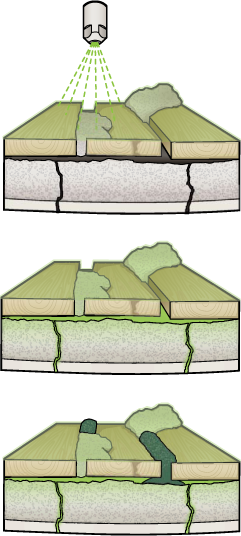John Tiedemann Inc., working with Historic Plaster Conservation Services Limited (HPCS), is now able to provide a vastly improved treatment for unsafe ceiling plaster. This method, called plaster consolidation, was developed in Canada and perfected over the past 25 years, and is now available in the United States.
The HPCS Method
The upper surface of the plaster is cleaned of debris and flooded with several applications of diluted acrylic resin.
The material is custom formulated to match the plaster and achieve maximum penetration into the base coats of the plaster ceiling surface.
The process strengthens the wood lath and bonds it to the fully consolidated plaster below. This approach, developed by HPCS, treats the entirety of the ceiling and essentially converts a precariously loose suspended system into a secure and strong fully adhered system.
The specific formulas are tweaked for each project in order to achieve maximum penetration, resulting in a strong but slightly flexible and well-bonded ceiling.
After the spray application of the resin, an adhesive is applied to the gaps between the wood laths. Under low pressure the material flows readily into the gaps and cracks like a grout where it fills the space between the wood lath and the base coats of plaster.
This work is done from the attic above the ceiling and direct access to the surface is often not even necessary. The benefits of this method are evident, especially where important decoration that would otherwise be lost is instead protected and saved.
John Tiedemann Inc. offers this treatment as a preventive maintenance solution to custodians responsible for large areas of historic plaster ceilings that are susceptible to partial or total failure.
This method of stabilizing fragile plaster has been used extensively by John Tiedemann Inc. To find out if this method may be suitable for your important plaster project, contact JTI.

